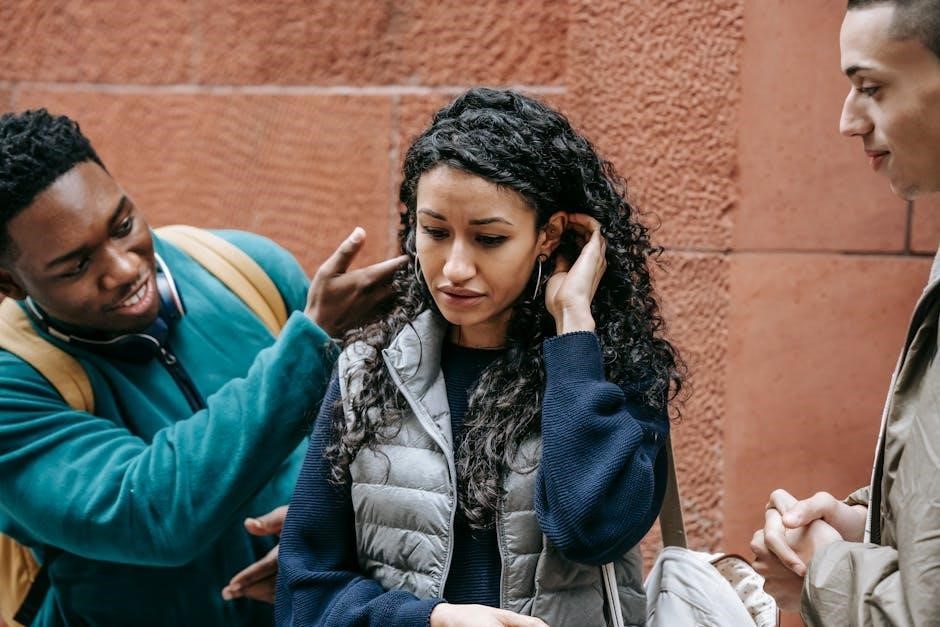Understanding Teen Anxiety
Teen anxiety is a common feeling, described as uneasiness or apprehension. Everyone experiences it at some stage. This workbook is designed to explore why humans experience anxiety. It will also focus on developing different ways of challenging anxiety.
Normalcy of Anxiety in Adolescence
Anxiety is a normal reaction, designed to keep us safe by preparing us to deal with challenges or dangerous situations. Everyone feels anxious at some stage; it’s a common experience during adolescence. This feeling is usually described as uneasiness or apprehension. Moderate anxiety can be beneficial, helping teens to be more alert, aware of their surroundings, and careful. It can also motivate them to prepare for tasks like tests, which can lead to improved performance. Understanding this normalcy is the first step in managing anxiety.
Identifying Anxiety Triggers
To manage anxiety, one must first name the problem. Identifying triggers, thoughts or situations that cause anxious feelings, is crucial. Worksheets can help pay attention to situations that induce anxiety and rate worried feelings.
Using a Fear Thermometer
Anxiety can be overwhelming for teenagers, and it can feel like it comes out of nowhere. A fear thermometer is a valuable tool to help teens organize and rank their fears. This tool goes from 1 to 10. For instance, seeing a frog might be a 1, while a frog jumping near them could be a 3. By visually representing anxiety levels, teens can better understand and communicate what makes them anxious. This method helps in managing and addressing anxiety triggers.

Cognitive Behavioral Therapy (CBT) Techniques
Cognitive Behavioral Therapy (CBT) offers effective strategies for teens to manage anxiety. Worksheets teach new perspectives and questions to reduce anxious thoughts. Teens will learn skills that suggest opportunities to face fears safely and in a controlled manner.
Challenging Anxious Thoughts
Anxious thoughts often feel overwhelming, but CBT techniques provide tools to question and reframe them. These worksheets will help your teen learn new ways to look at situations, suggesting questions to ask in order to reduce anxious thoughts. By identifying negative thought patterns, teens can learn to replace them with more balanced and realistic perspectives. This process involves examining the evidence for and against anxious thoughts, helping teens develop a more rational outlook. Regular practice of these techniques can lead to a significant reduction in anxiety levels and improved coping skills.
Exposure Therapy
Exposure therapy involves gradually facing feared situations or objects in a safe and controlled environment. These worksheets help you and your teen design exposures, which are opportunities to face fears in a controlled and safe way. This process, called habituation, helps reduce anxiety by demonstrating that the feared outcome is unlikely to occur or is less severe than anticipated. Exposure usually starts with developing a fear hierarchy. Regular, gradual exposure can help teens develop confidence and reduce avoidance behaviors associated with anxiety. This technique should be practiced under the guidance of a therapist.
Mindfulness and Relaxation Techniques
Mindfulness and relaxation techniques help increase feelings of calm and well-being. Make these skills a consistent part of your daily life in order to reduce stress. Several brilliant apps can guide you through mindfulness exercises.
Deep Breathing Exercises
Deep breathing is a simple, yet powerful, relaxation technique. It can help calm the nervous system by activating the body’s relaxation response. This involves taking slow, deep breaths from the diaphragm, which can decrease heart rate and lower blood pressure. Regular practice of deep breathing exercises can improve focus and reduce overall anxiety levels. This technique is particularly useful in managing immediate feelings of stress or panic. Encouraging teens to incorporate deep breathing into their daily routine can provide them with a valuable tool for self-regulation and emotional well-being.
Progressive Muscle Relaxation
Progressive Muscle Relaxation (PMR) is a technique that involves systematically tensing and then releasing different muscle groups in the body. By focusing on the contrast between tension and relaxation, individuals become more aware of their body’s physical sensations and can learn to release muscular tension associated with anxiety. This practice can promote a sense of calmness and reduce overall stress levels. PMR is a valuable tool for managing both physical and emotional symptoms of anxiety. Regular practice helps teens develop greater body awareness and improve their ability to relax on demand, fostering resilience.

Practical Strategies for Parents
Parents can play a vital role in helping teens manage anxiety. This section provides practical advice and resources. Discover how parents can help provide relief for their son or daughter, and when to pursue treatment.
Creating a Supportive Environment
Creating a supportive environment is crucial for teenagers dealing with anxiety. Parents should try to remain as calm and patient as possible when dealing with problems and challenging situations. A supportive environment helps teens feel safe and understood, reducing overall stress. Open communication is key. Encourage them to share their feelings without judgment. Validate their experiences and let them know it’s okay to feel anxious. Focus on creating a home atmosphere that promotes relaxation and well-being. Reduce stressors where possible and establish a predictable routine.
Encouraging Open Communication
Encouraging open communication is essential when supporting a teen with anxiety. Create a safe space where they feel comfortable sharing their thoughts and feelings without judgment. Listen actively and empathetically when they express their concerns. Validate their emotions, reassuring them that their feelings are normal and understandable. Ask open-ended questions to encourage them to elaborate on their experiences. Avoid dismissing their worries or offering unsolicited advice. Instead, focus on understanding their perspective. Regular conversations about their day and any stressors they encounter can foster trust and strengthen your bond.
When to Seek Professional Help
If anxiety impacts a teen’s daily activities, professional help may be needed. Look for extended periods of anxiety beyond 1-3 months. Anxiety can affect thinking, feelings, and behaviors. Seeking help is a sign of strength.
Recognizing Signs of an Anxiety Disorder
Recognizing anxiety disorder signs is crucial. Watch for excessive worry, impacting daily life. Changes in behavior, like regular shifts, indicate potential issues. Anxiety manifests on four levels: fear, thoughts, emotions, and behavior. Identify anxious thoughts, bodily responses, and feelings. It’s important to note that anxiety ranges from mild to severe, lasting beyond a few months. If a teen is unable to attend school due to anxiety, this may be a sign to seek professional help. If you notice a regular change in behavior, its usually a sign that something is wrong.

Available Resources
Numerous resources aid teens managing anxiety. Anxiety workbooks offer activities and techniques. Apps provide guided mindfulness. Continuing education opportunities exist for professionals. Online courses and workshops are also available for parents seeking support and guidance in Colchester.
Anxiety Workbooks for Teens
Anxiety workbooks offer teens strategies to overcome fears and shyness. These resources provide a solid foundation for managing anxiety for years. These workbooks often include worksheets to help teens look at situations in new ways, suggesting questions to reduce anxious thoughts. They also guide teens through exposures, opportunities to face fears safely.
These workbooks explain anxiety, offer practical advice, and include activities. They help teens understand why they experience anxiety and explore how it feels. They also focus on developing ways of challenging anxiety with exercises and worksheets to practice these skills.
Apps for Mindfulness and Anxiety Management
Apps can guide teens through mindfulness exercises, offering tools for anxiety management. These apps often teach simple skills that help increase calm and well-being. Consistent use of these skills can reduce stress in daily life.
Some apps provide guided mindfulness sessions. These apps can help teens identify triggers, manage time, and feel calm. These apps are useful supplements to workbooks. Many apps include features to help manage anxiety. Several excellent apps are available that guide teens through mindfulness.

The Anxiety Curve
The anxiety curve shows stages: a trigger (1), rising anxiety (2), peak anxiety (3), decreasing anxiety (4), and calm (5). The time between stages varies. Understanding this curve helps manage anxiety.
Understanding the Stages of Anxiety
The anxiety curve illustrates the progression of anxious feelings, starting with a trigger – a thought or situation causing anxiety. This initial trigger leads to rising anxiety levels, intensifying until reaching peak feelings of anxiety, the most intense point. Subsequently, anxiety levels decrease, gradually subsiding until reaching a state of calm. The duration of each stage varies. Recognizing these stages provides insight into managing anxiety, helping individuals anticipate and navigate their anxious responses more effectively. Understanding the curve is a valuable tool for developing coping strategies and regaining a sense of control.
Promoting Overall Well-being
Overall well-being includes proper sleep, diet, and exercise. It is important to remain calm and patient. This can improve mental health and reduce stress. Consistent life skills and exercises promote calm feelings.
Importance of Sleep, Diet, and Exercise
Sleep, diet, and exercise play a crucial role in overall well-being, significantly impacting a teenager’s mental health. Adequate sleep helps regulate mood and reduces feelings of stress and anxiety. A balanced diet provides essential nutrients that support brain function and emotional stability. Regular exercise releases endorphins, which have mood-boosting effects and can alleviate anxiety symptoms. Encouraging healthy habits in these areas is a practical strategy for promoting resilience and reducing anxiety. Prioritizing these elements contributes to a more balanced and positive state of mind for teenagers.

Be First to Comment